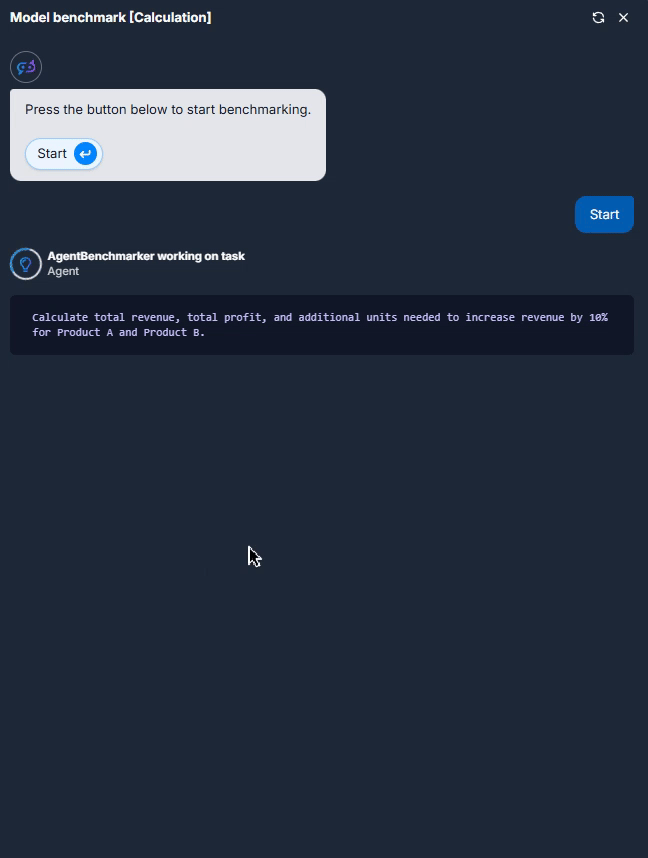
Grok Beta와 같은 AI 에이전트의 동력은 무엇인가요?
Grok Beta AI 에이전트가 보여주는 추론, 문제 해결, 창의적 작업의 고급 능력을 탐구합니다. 이 심층 분석에서는 실습 분석을 통해 강점, 한계, 실제 활용 사례를 밝혀냅니다....

GPT-4o Mini와 같은 AI 에이전트가 기존 LLM을 뛰어넘어 고급 추론, 역동적 문제 해결, 실세계 작업에서의 창의적 능력을 어떻게 발휘하는지 알아보세요.
Prompt:
When user says “Start” you should:
Content Generation: Write a comprehensive, informative article about project management fundamentals, with a specific focus on defining objectives, scope, and delegation.
Agent Thought Process (with Timestamps):
Objectives in project management are specific and measurable outcomes that a project aims to achieve. They serve as a guide for the project team and help in assessing the project’s success upon completion. Effective project objectives should be:
Example: Rather than stating “increase sales,” a SMART objective would be “increase sales by 20% within the next quarter.”
Time Taken: 1 minute 48 seconds
Readability: Flesch-Kincaid Grade Level: 13, Score: 12.69
Summary Length: 463 words
This illustrates the agent’s ability to combine research, synthesis, and structured writing to produce high-quality content.
Prompt:
A company sells two products: Product A and Product B. Product A costs $30 per unit to produce and sells for $50 per unit. Product B costs $40 per unit to produce and sells for $70 per unit.
Agent Thought Process (with Timestamps):
To achieve a 10% increase in total revenue for the company, the total revenue from sales of both products is $11,600, and the total profit is $4,800. To reach the target revenue of $12,760, the company needs to sell additional units. One possible solution is to sell 24 more units of Product A or 17 more units of Product B. Alternatively, a combination of additional units sold from both products that results in an extra $1,160 in revenue will also achieve this goal.
Time Taken: 37 seconds
Readability: Flesch-Kincaid Grade Level: 11.9, Score: 48.5
Summary Length: 107 words
This showcases multi-step calculation and decision-making capabilities.
Prompt:
Summarize the key findings from the previous article in 100 words, focusing on the most significant sections.
Agent Thought Process (with Timestamps):
The article explores AI reasoning, defining its types and importance while tracing its historical development from early systems to contemporary models like GPT and neuro-symbolic AI. It emphasizes AI’s role in enhancing decision-making, problem-solving, and human-AI interactions. In healthcare, AI significantly boosts diagnostic accuracy, aids clinical decision-making, and optimizes administrative processes. Recent advancements include OpenAI’s o1 Model, which features enhanced reasoning capabilities, improved safety, and greater cost efficiency, thereby underscoring the transformative potential of AI reasoning across various sectors.
Time Taken: 21 seconds
Readability: Flesch-Kincaid Grade Level: 18.4, Score: 19.8
Summary Length: 79 words
Prompt:
When user says “Start” you should:
Compare the environmental impact of electric vehicles with that of hydrogen-powered cars. Include factors such as energy production, vehicle lifecycle, and emissions.
Agent Thought Process (with Timestamps):
Time Taken: 40 seconds
Readability: Flesch-Kincaid Grade Level: 16, Score: 15.7
Summary Length: 532 words
Prompt:
Write a futuristic story (500 words) set in a world where electric vehicles have fully replaced traditional combustion-engine vehicles. Describe the environmental changes and societal impact.
Agent Thought Process (with Timestamps):
In the year 2075, the world stood as a testament to humanity’s resolve to reshape its destiny. Cities thrived with a new kind of energy, one that hummed quietly beneath the feet of bustling pedestrians and cyclists, no longer masked by the roar of combustion engines. Electric vehicles (EVs) had not only replaced their gas-guzzling predecessors but had redefined urban life, the environment, and societal norms.
The air was crisp and clear, a far cry from the smog-laden skies of the early 21st century. Residents of cities like New York, Beijing, and Delhi marveled at the stars visible above, a nightly spectacle once obscured. The transition to EVs had drastically reduced air pollutants, leading to a significant decline in respiratory illnesses and an overall increase in life expectancy. The global reduction in greenhouse gas emissions had stabilized climate patterns, giving rise to seasons that danced predictably upon the earth, nurturing agriculture and biodiversity.
Time Taken: 42 seconds
Readability: Flesch-Kincaid Grade Level: 13, Score: 13.31
Summary Length: 526 words
기존 LLM과 달리, GPT-4o Mini와 같은 AI 에이전트는 의사결정, 계획 수립, 역동적 문제 해결 능력을 갖추고 있습니다. 이들은 추론을 시뮬레이션하고, 복잡한 작업에 적응하며, 도구를 활용해 연구, 통합, 단순 텍스트 생성 이상의 창작을 할 수 있습니다.
GPT-4o Mini는 복잡한 작업을 체계적으로 관리 가능한 단계로 분해하고, 연구 도구, 반복적 개선, 구조적 사고를 활용해 종합적인 콘텐츠 생성, 계산 수행, 개념 비교, 창의적 서사 창작까지 해냅니다.
기사에서는 AI 에이전트가 구조화된 콘텐츠 생성, 수익 계산, 기사 요약, 기술 비교, 창의적 글쓰기 등 다양한 도메인에서의 다재다능함과 적응력을 보여줍니다.
아르시아는 FlowHunt의 AI 워크플로우 엔지니어입니다. 컴퓨터 과학 배경과 AI에 대한 열정을 바탕으로, 그는 AI 도구를 일상 업무에 통합하여 생산성과 창의성을 높이는 효율적인 워크플로우를 설계하는 데 전문성을 가지고 있습니다.
Grok Beta AI 에이전트가 보여주는 추론, 문제 해결, 창의적 작업의 고급 능력을 탐구합니다. 이 심층 분석에서는 실습 분석을 통해 강점, 한계, 실제 활용 사례를 밝혀냅니다....
GPT-o1 Mini AI 에이전트의 고급 기능을 살펴봅니다. 이 심층 분석에서는 텍스트 생성 그 이상을 넘어, 다양한 작업을 통한 추론, 문제 해결, 창의력 등 구조적 접근 방식과 다재다능함을 보여줍니다....
Gemini 1.5 Flash가 AI 에이전트로서 지닌 고급 기능을 살펴봅니다. 이 심층 분석에서는 텍스트 생성 그 이상을 넘어, 다양한 작업을 통해 추론, 문제 해결, 창의적 능력을 어떻게 발휘하는지 보여줍니다....



